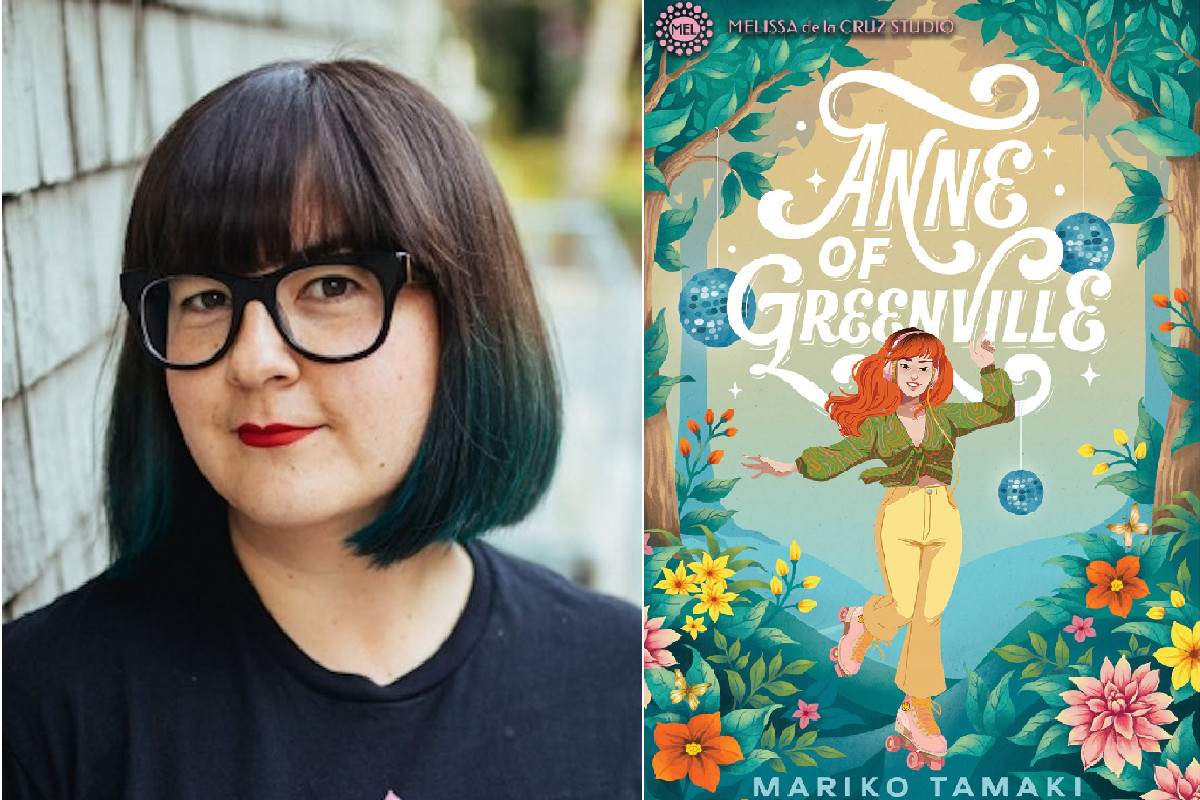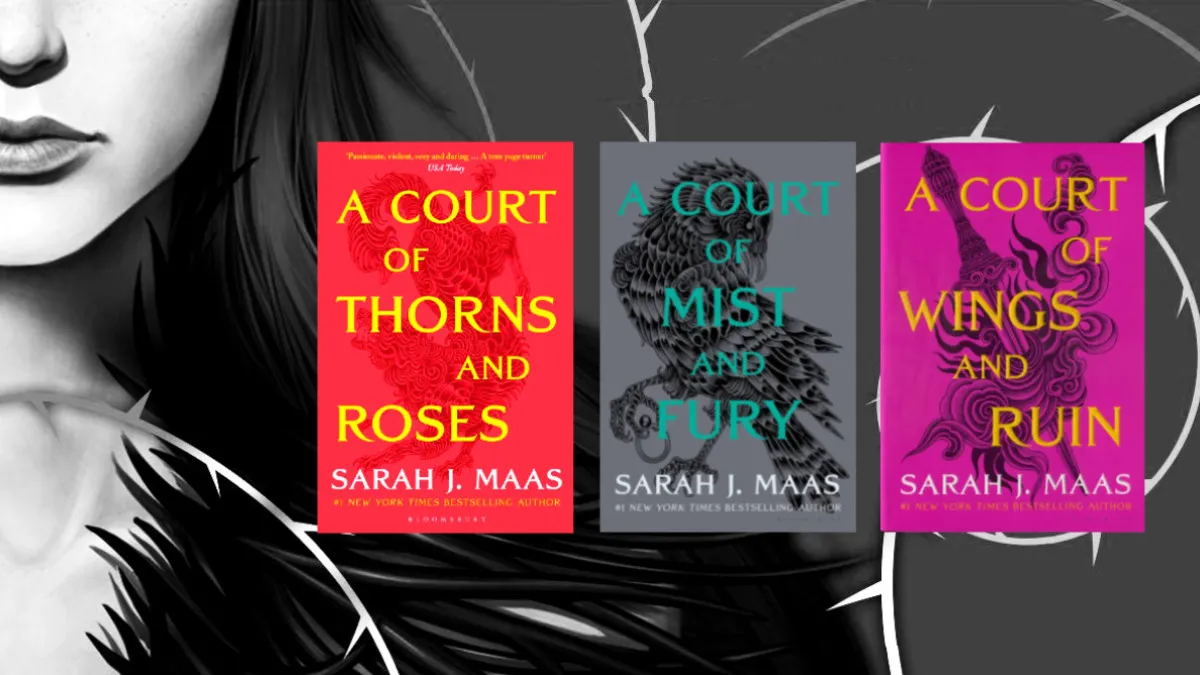Mariko Tamaki has reimagined Lucy Maude Montgomery’s timeless classic, Anne of Green Gables, in the best possible way in her new Young Adult (YA) novel, Anne of Greenville. Anne of Greenville was published on October 4, 2022 and marks Tamaki’s most recent literary work. The two-time Michael L. Printz Award nominee is also known for writing Laura Dean Keeps Breaking Up with Me and This One Summer. She has also written for both Marvel and DC comics.
Anne of Greenville follows Anne Shirley, a queer, disco-loving, and free-spirited high schooler who moves to Greenville with her mothers, Lucy and Millie. However, it doesn’t take long for the small town with small town sentiments to begin displaying racism and homophobia towards Anne and her family. Anne experiences many injustices, as does Lucy, the new vice principal of Greenville’s high school, as the town attempts to drive them out. At first, Anne and her mothers try to blend in and suffice the town by putting a damper on their personalities. Anne’s spirit can’t be contained for long, though, and her charisma and personality leave a stamp on the whole town as she tackles high school, finds her “true true,” and learns to unapologetically be Anne of Greenville.
While Anne of Green Gables is a classic masterpiece, it is difficult for some readers to see themselves in Maude’s Anne Shirley in this day and age. Anne of Greenville remedies this situation by capturing the spirit of Anne of Green Gables, but making Anne a confident and strong young woman who is queer and biracial. I was honored to speak with Tamaki to learn more about Anne of Greenville. We talked about LGTBQ+ representation, disco hits, and the process of reimagining a classic in Anne of Green Gables.
Rachel Ulatowski (TMS): To begin with, let’s first talk about inspiration. While, of course, Lucy Maud Montgomery’s Anne of Green Gables was a big inspiration, how did you settle on the idea to reimagine her work in Anne of Greenville?
Mariko Tamaki: I started reimagining it because I got a call from Melissa de la Cruz who asked if I would be interested in writing a reimagining of Anne for her new imprint with Disney. To me, it was a sort of interesting challenge because I’ve done a lot of work like that with existing characters for DC Comics—like I wrote this YA graphic novel about Harley Quinn and I had written about Supergirl and Starfire. So it seemed like a very Canadian version of something I had spent a lot of time doing.
TMS: What do you think is the benefit of reimagining a classic literary work as opposed to writing a wholly original story?
Tamaki: I don’t know that there’s a benefit exactly, and I’m not really a person who’s going to spend a lot of time campaigning for people to read or reimagine classics. Like, I love classics, I love a lot of different classics, but I also am a very big advocate for people who are writing new stories, new voices, and, you know, creating new classics as opposed to reimagining existing ones. I think the possible benefit, or one reason to reimagine a classic, is to take the stories that are considered canon and to expand them to include different storylines and characters, since the majority of the classics are about straight white characters.
For me, personally, I wanted to celebrate what Anne of Green Gables meant to me, which is a very selfish reason to write something. I was a weird kid who survived high school because I was a daydreamer. Even though I didn’t have orange hair and freckles, and I didn’t live in Prince Edward Island, I deeply related to the character of Anne. So, for me, it was really satisfying to write a take on the classic about an Anne who had experiences that encompass more of the reality I knew as a kid, to write an Anne who is queer and who is BIPOC and all those things, was really gratifying.
TMS: You touched on this a bit in the previous question, but when did you first read Lucy Maud Montgomery’s Anne of Green Gables and how did it impact you?
Tamaki: My true confession is that I don’t remember the first time I read the book. Because I’m a Canadian, like a Generation X Canadian, the biggest impact for me was probably the original CBC series which was based on the books, which came out in 1985 which was the perfect timing for me. It starred Megan Follows, so really, my Anne will always be Megan Follows. It was just hands-down my favorite thing forever. I think I’ve probably seen the first two series of that, like, probably more than 20 times each, because I’ve been watching them since the 80s. So, that was my big impact.
TMS: What kind of impact do you hope Anne of Greenville will have on modern readers?
Tamaki: I’m never really sure, because I think there’s probably such a swath of people who will discover this book. I hope that people who love the original Anne of Green Gables will see that I tried to connect to the spirit of the original book without rewriting all the beats. I hope for new readers that the story is inspiring and I hope it’s something people enjoy. I hope people find it funny, because I really wanted it to be funny. So those are my main goals.
TMS: Tell us a bit about the title of Anne of Greenville. What is the significance of Greenville and what made you settle on that particular city for the book’s setting?
Tamaki: Probably one of the main differences between this book and the original is that I think the original was very much about Avonlea and Prince Edward Island and the magic of that place. Really, Avonlea is very much a character in a very whimsical way in the book. Even from Anne’s first entrance into Avonlea—in the original—it’s this very fairytale-like entrance. I was not really as interested in having the city be as much of a character.
So, the town of Greenville is more of the background here. Also, I try not to be specific unless I’m representing a city that I’ve lived in for a long time—like I feel, obviously, very comfortable representing, say, Toronto because I’ve spent a lot of time there. So when I’m not writing about a city that I feel like I know really well, I try to keep it very, sort of, any town, as opposed to a town.
TMS: You channel Montgomery’s style and voice incredibly well in Anne of Greenville. Was this intentional and, if so, did you have a method for doing so?
Tamaki: I tried to just make the character a very confident daydreamer. I feel like I’m somebody who has been given a lot of credit for writing authentic teen voices, but really it’s my voice, so it just speaks to a lack of maturity in my own expression, which has served me well in Young Adult writing.
TMS: Anne of Greenville largely focuses on Anne dealing with racism and homophobia in her new home town. The injustices she experiences are quite infuriating at times. What message do you hope the book sends to readers who may be in similar situations?
Tamaki: I try to stay in the experience of the thing, to stay in the characters; experience, as opposed to giving a message about it—to stay true to the emotion about what it feels like to be standing in the shoes of somebody who is being treated really horribly for no other reason than the basic facts of their existence.
I did make a choice to make the Anne of this book much more self-assured than I certainly ever was in high school. I think because I’ve written a lot of books about kids who just feel buried under that pressure, I wanted to try to find a story about a kid who was able to maintain her sense of self in the face of people’s prejudices. [Anne’s] somebody who’s really clear that the problem and the situation are not about her—she’s not responsible for what’s happening—and hopefully there’s inspiration in that, in seeing someone maintain that kind of strength in the face of what Anne has to deal with in the story.
TMS: Anne of Greenville is filled with musical references, from “Funky Town” to Gloria Gaynor’s “I Will Survive” to The Beatles. There’s this feeling of the book almost having its own soundtrack. What is the significance of the disco-era hits and why are they central to Anne’s character?
Tamaki: Well, the original Anne was very into poetry and, obviously, poetry’s a big part of her imaginative, creative self. I love the idea of a character who has a very strong literary influence in her life. I don’t know how many kids today are reading poetry. Maybe more kids than I know are actually reading poetry, but, for me growing up, music lyrics were very much that for me. The songs that I have memorized and the meaning of those lyrics to me and what those songs did for me, in terms of being kind of a gateway to an imaginary world or a bit of a gateway to an escape—that was really interesting to explore.
I thought making it music would be an interesting take as opposed to poetry. Then, I’m just a really big disco fan. I love disco. I think disco is the best. So, I really just selfishly channeled all of my favorite songs and made her [Anne] into a sort of amateur expert in disco.
TMS: The complete Anne of Green Gables series consists of 8 books. Do you have any plans to write more Anne of Greenville books?
Tamaki: I would love to write more. I think it’s just a question of how well this book does. I mean, I think that I finished this book really loving this character, so I would be happy to sort of see her through more adventures. I think that would be awesome.
(featured image: Shawnee Custalow, Melissa de la Cruz Studio)









Published: Oct 6, 2022 10:52 am